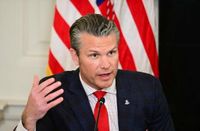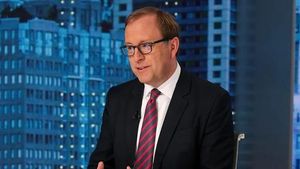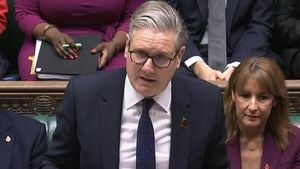U.S. Defense Secretary Pete Hegseth is embarking on a whirlwind diplomatic tour of the Indo-Pacific region this week, making stops in Japan, Malaysia, Vietnam, and South Korea as part of a renewed push to strengthen alliances and urge increased defense spending among American partners. The Pentagon confirmed the trip on October 26, 2025, framing it as a vital mission in what it calls its "priority theater"—a clear nod to the growing strategic importance of the region in the face of rising tensions with China.
Hegseth’s itinerary begins in Japan, where he is set to accompany President Donald Trump, who is also in the region attending summits and bilateral talks. The highlight of the presidential visit is a face-to-face meeting in South Korea between Trump and Chinese President Xi Jinping, scheduled for October 30, 2025. According to the Pentagon, the Secretary’s presence underscores the United States’ commitment to deepening military ties and ensuring "peace through strength together with our allies and partners."
On Wednesday, October 29, Hegseth will meet with Japanese Defense Minister Shinjiro Koizumi. The Japanese Defense Ministry announced that Koizumi intends to present plans to accelerate Japan’s defense spending and to revise three key national security-related documents. The urgency of these revisions is no coincidence; both Tokyo and Washington have grown increasingly wary of what they see as "growing regional threats." As the U.S. Defense Department put it in a recent statement, "Key themes will include ... the importance of allies stepping up their defense spending and contributions to our collective defense."
Japan’s willingness to bring forward its defense spending goals is seen as a direct response to U.S. pressure, but it also reflects Tokyo’s own concerns about the shifting security landscape. For years, Japan has walked a careful line, balancing its pacifist constitution with the realities of an assertive China and a volatile North Korea. Now, with Hegseth’s visit and Trump’s high-profile presence, that balance appears to be tipping more decisively toward military preparedness and alliance-building.
After Japan, Hegseth will travel to Malaysia to attend the Association of Southeast Asian Nations (ASEAN) Defense Ministers’ Meeting Plus. This gathering brings together defense leaders from across the Asia-Pacific, offering the U.S. another opportunity to press its case for regional unity and increased military investment. The Pentagon’s message is clear: allies must "step up their defense spending and contributions to our collective defense" if they want to ensure peace and stability in the face of a rising China.
In Vietnam, Hegseth’s mission takes on a historical resonance. This year marks the 50th anniversary of the end of the Vietnam War, a conflict that once defined U.S. involvement in Asia. Now, the two countries are seeking to strengthen cooperative ties, turning a page on their shared—and often painful—history. The visit is expected to focus on deepening security cooperation and highlighting the progress made in U.S.-Vietnam relations over the past half-century.
The final stop on Hegseth’s tour is South Korea, where he is expected to co-chair a bilateral security meeting and discuss increasing defense spending. The timing is significant: with President Trump and Xi Jinping meeting in Seoul, the spotlight is firmly on the Korean Peninsula. North Korea’s unpredictable behavior and China’s expanding influence have made security cooperation between Washington and Seoul more important than ever. Hegseth’s visit is meant to reinforce that partnership and ensure that South Korea remains a strong contributor to regional defense.
Throughout the trip, Hegseth is carrying a consistent message: the Indo-Pacific is America’s "priority theater," and allies must do more to share the burden of collective defense. As he warned at the Shangri-La Dialogue in Singapore back in May 2025, "China was credibly preparing to potentially use military force to alter the balance of power in the Indo-Pacific." That warning has only grown more urgent in recent months, as China continues to expand its military presence in the South China Sea and assert its territorial claims against neighbors like Japan and the Philippines.
"Under Secretary Hegseth’s clear and strong leadership, the Department recognizes the importance of the focus on the Indo-Pacific and the need to ensure peace through strength together with our allies and partners," the Pentagon said in its statement. The emphasis on "peace through strength" is more than just rhetoric; it reflects a strategic calculation that only a united and well-armed alliance can deter aggression and maintain stability in the region.
Hegseth’s tour is also notable for its timing and scope. This is his second trip to the Indo-Pacific in 2025, a sign that Washington views the region as increasingly central to its global strategy. While crises in the Middle East and Europe have often diverted U.S. attention, the Pentagon is making it clear that Asia is now front and center. The Secretary’s stop in Hawaii to meet with leaders of the U.S. Indo-Pacific Command further underscores the military’s operational focus on the region.
But the U.S. campaign for increased allied defense spending is not without its challenges. Many countries in the region face domestic pressures that make large military investments politically sensitive. Japan, for example, must navigate constitutional constraints and public skepticism about rearmament. Vietnam’s relationship with China is complex, shaped by both cooperation and rivalry. And in South Korea, debates over the cost-sharing of U.S. troop deployments have occasionally strained the alliance.
Still, U.S. officials remain adamant that the stakes are too high for hesitation. As Hegseth said in Singapore, "America’s focus on the Indo-Pacific, the Department’s priority theatre," must be matched by "allies stepping up their defense spending and contributions to our collective defense." The Pentagon is betting that a combination of diplomatic engagement, historical commemoration, and strategic urgency will persuade its partners to do just that.
While the U.S. is also increasing its presence in Latin America as part of a campaign against drug trafficking, it is the Indo-Pacific that dominates Washington’s strategic thinking. The specter of a more assertive China, combined with unresolved territorial disputes and North Korea’s unpredictable actions, has created a sense of urgency that is hard to ignore.
As Hegseth’s tour unfolds, all eyes will be on whether America’s allies in Asia are willing—and able—to answer Washington’s call. The meetings, speeches, and symbolic gestures of the coming days will help shape the future of the region’s security architecture. The message from the U.S. is unmistakable: the time for collective action is now.
With the Indo-Pacific at the center of global attention, the outcome of Hegseth’s trip could set the tone for regional cooperation—and competition—for years to come.




